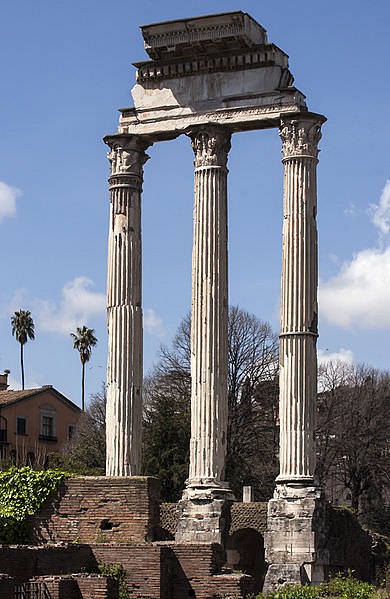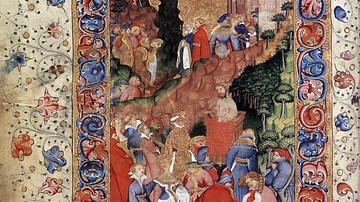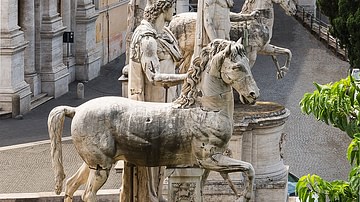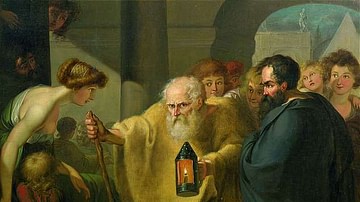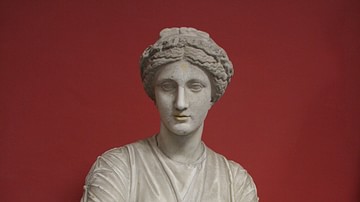The Temple of Castor and Pollux in the Roman Forum of Rome was erected in the final decade of the 1st century BCE, replacing the earlier temple to the twin sons of Jupiter which had stood on the site since 484 BCE. Today only the inner concrete core of the podium and three columns survive of this once massive structure.
Castor and Pollux, in Roman mythology, were the twin demi-god offspring of Jupiter and Leda and equivalent to the Dioscuri of Greek mythology. They are also represented in the constellation Gemini. Pollux was considered immortal whilst his brother was mortal; both were particularly associated with cavalry and the cult of the twins went back to the mid-6th century BCE in Italy. The original temple in Rome was dedicated by the Roman general Aulus Postumius who won a great victory against the Latins in the Battle of Lake Regillus (499 or 496 BCE). During the battle two young men riding white horses were said to have appeared and guided the Romans to victory and then were seen again after the battle watering their horses at the Juturna Spring in Rome, hence the subsequent dedication to the famous cavalry twins and choice of location for the temple next to the fountain. Parts of the original temple's podium survive and hint at its great size.
Every 15th of July the temple was the focus of a cavalry parade - the transvectio - of 5,000 men led by two impersonators of the heroes who commemorated the victory at Regillus. Renovations to the temple, which came to be more associated with Castor following the hero's adoption by Roman knights (equites), were made in the first and last quarters of the 2nd century BCE, notably in 117 BCE by Lucius Caecilius Metellus Delmaticus following his victory over the Dalmatians.
Following the devastating fire of 14 or 9 BCE Augustus rebuilt the temple, made the cult an official imperial one and initiated a new feast day for the pair on the 27th of January. The emperor also sought to associate his own two sons - Gaius and Lucius Caesar - with the heroes and their temple. However, both children were to die before completion of the project and so were substituted by Tiberius and his late brother Drusus in 6 CE, the former was also responsible for the final restorations.
Constructed in white marble and tufa, the new temple was a massive structure measuring 32 x 50 m and reached a height of almost 19 m. The facades had 8 Corinthian columns whilst the sides each had 11. The original front entrance was composed of twin staircases with a speaker's platform, changed in the 3rd century CE to a single staircase. The interior of the temple was quite complex and consisted of some 25 small chambers. The temple served as the office of weights and measures with an additional function as a bank. From the 4th century CE the temple gradually fell into decline with only three columns now standing silent testimony to the lost grandeur of this once magnificent building.
